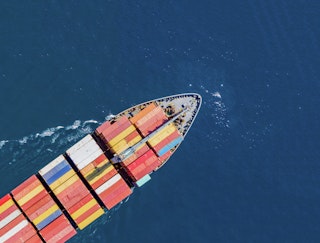Almost one and a half year after the European Commission proposed to extend the scope of the EU Emissions Trading System (EU ETS) to also cover greenhouse gas emissions from maritime transport, the EU has reached a final agreement on a revised version of the EU ETS.
Updated 15 February 2023
On 14 July 2021, as part of the "Fit for 55" package, the Commission published a proposal for a revision of the EU ETS, to align it with the target of a 55% reduction of greenhouse gas emissions by 2030, compared to 1990 levels. The Commission's proposal has been subject to extensive discussions in the European Parliament and the European Council since it was published.
On 18 December 2022, EU institutions reached political agreement to reform the EU ETS – almost one and a half year after the Commission's proposal. An important part of the revision has been to include emissions from maritime transportation, and the directive will now require ship operators to pay for their greenhouse gas emissions for the first time.
EU ETS and maritime transport – requirements and processes
- Shipping companies have to surrender allowances that cover 40% of their verified emissions in 2024, 70% in 2025 and 100% in 2026. The deadline to surrender allowances will be on 30 September the following year.
- 100% of emissions from intra-European routes and 50% of emissions from extra-European routes to and from the EU, will be covered.
- To limit the risk of evasive port calls to ports outside the EU and relocation of transhipment activities to ports outside the EU, containerships stopping at typical container transhipment ports outside the EU (applying a transhipment ratio of 65% of the total container traffic), but less than 300 nautical miles from an EU port, need to include 50% of the emissions for the voyage to that non-EU port as well, rather than only the short leg from the non-EU transhipment port to the EU port. It is expected that the EU will provide a list of such typical container transhipment ports.
- Maritime transport will not receive free allocation nor be protected by the EU's Carbon Border Adjustment Mechanism (CBAM).
- The EU ETS will be extended to cover methane (CH₄) and nitrous oxides (N₂O), not only CO₂, from 2026.
- The EU ETS will apply to all cargo vessels and passenger ships over 5,000 gross tonnes.
- Offshore service vessels of 5,000 gross tonnes or more will be included in the MRV Regulation on the monitoring, reporting and verification of CO₂ emissions from maritime transport from 2025 and included in the EU ETS from 2027.
- General cargo vessels and offshore vessels between 400 – 5,000 gross tonnes will be included in the MRV Regulation from 2025 and their inclusion in the EU ETS will be reviewed in 2026.
- The agreement recognises derogations for ice class ships, small islands, outermost EU regions and public service journeys between Greece and Cyprus.
- The shipping company is responsible for complying with the ETS directive and surrendering the right amount of allowances. Failure to surrender emission allowances may lead to the imposition of fines and ultimately also refusal of port calls.
Further details on the requirements and processes can be expected as the final text is adopted.
Next steps in the EU
Parliament and Council will have to formally approve the agreement before the new law can come into force. On 9 February 2023, the European Parliament's Environment Committee voted in favour of the revised EU ETS, pushing the bill closer to formal adoption. A full plenary vote is expected in April 2023. After the plenary vote, the directive has to be formally adopted by the EU Council of ministers and becomes binding after being published in the EU’s Official Journal.
Norway's position
Norway's Minister of Climate and Environment, Espen Barth Eide, recently stated that it will be challenging for Norway to meet the requirements from 2024. For the revised EU ETS to enter into force in Norway, the directive must be incorporated into the EEA Agreement and approved by the Norwegian Parliament. Also, the Norwegian Climate Act must be revised as it currently does not cover maritime transportation.
Our recommendations
Ship owners, operators and managers should start preparing on how to comply with the requirements. Preparations should include, for example, assessing to what extent its vessels (by trade and size) will be required to surrender EU ETS emission allowances, implementing contractual regulation for the purchase and surrender of emission allowances and also means to monitor compliance with the EU ETS.
Thommessen Sustainability Database
The increased focus on sustainable development is accompanied by accelerating sustainability regulation. Our Sustainability Database helps you navigate the multitude of regulations and industry initiatives, and covers close to 40 different regulations and private law initiatives of relevance to shipping industry players alone.
The service is available to our clients, potential clients and other partners. Register here

 Henrik Hagberg
Henrik Hagberg

